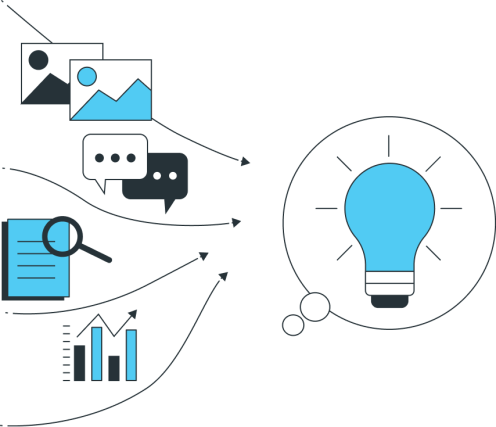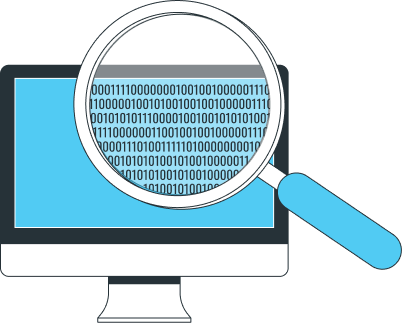Everyone has an opinion on ChatGPT. The media highlights its ability to generate well-written, relevant content. Engineers regard it as a technological upheaval, while entrepreneurs perceive it as a promising new frontier to be explored. Essentially, the AI-powered chatbot has been the talk of the town since its public release in November 2022: it reached the milestone of 100 million users in only two months, faster than TikTok’s nine months and Google Maps’ two years, thereby establishing a new record.
This wave of curiosity seems more than legitimate, as the advancement made by chatbot technology is impressive. But what really lies behind ChatGPT? How does this technology work? What can it do? And what are its limits? Here is a summary of everything you need to know.
What Is ChatGPT?
ChatGPT is the name of the interface that provides access to an AI-based language learning model, GPT-3, capable of generating text that mimics human style. In other words, ChatGPT is the name given to the application – which is nothing but an enhanced chatbot – to which users can ask questions and from which they can get answers.

At first glance, this is not so different from what virtual assistants integrated into smartphones and smart speakers, such as Siri, Google Assistant, and Alexa, already do. Yet, ChatGPT takes it a step further with its learning model, enabling users to ‘chat’ with the machine, akin to talking with a friend or a coworker. This is precisely what is stunning about this program: it becomes difficult to distinguish the text generated by the machine from the writings produced by humans.
Its main function is to generate text in response to questions asked by internet users. In this sense, ChatGPT can produce content tailored to the user’s request, identify errors, reject requests it deems inappropriate, but also develop its knowledge through exchanges. Below, an example of an answer provided to a ‘simple’ question.
This technology has put the American firm OpenAI, which specialises in artificial intelligence, in the limelight. It is among the numerous global companies developing AI-based tools. Located in San Francisco, OpenAI was founded in 2015 by Elon Musk and Sam Altman as a nonprofit, before becoming a for-profit company in 2019, at the time of the development of GPT-2, the predecessor of the model presented in 2022.
How Does ChatGPT Work?
To function, ChatGPT relies on the GPT-3.5 (Generative Pre-Training Transformer) language model. The program has ‘trained’ on vast amounts of data that allow it to make predictions, to ‘stick’ words together while producing meaning. In this regard, we talk about a Large Language Model (LLM) due to the very large number of parameters used – 175 billion in this case.
Thanks to a deep learning system that gives it the keys to understand the use of words in their context, it manages to give the illusion of human behaviour by offering responses that are both coherent in content and correct in form, adapting its interventions as more details are requested, and learning from the exchanges conducted with users.

(Source: OpenAI)
In essence, ChatGPT combines encyclopedic knowledge and a remarkable ability to mimic language.
However, this technology is not new, since it relies on the Transformer neural network developed by Google, which also powers the company’s own natural language learning model from Mountain View, LaMDA (found in Google Bard). In addition, other companies are working on equivalent models.
However, the revolution here lies more in the usage than in the technology: by integrating the program into an intuitive interface, OpenAI has given the general public the opportunity to interact directly with ChatGPT, to experience it tangibly, and to push its limits. It’s an excellent way for the company to collect feedback (you can ‘rate’ the response given by the application) and to test its limits in real time, involving internet users across the world.
How to Use ChatGPT?
Since its public launch in November 2022, ChatGPT is free to use. Any internet user can try it by visiting this page and creating an account. It is a web application that requires no installation.
Once on the interface, just type your request into the dedicated field and click the send button. Here is an example:

As a conversational AI, ChatGPT is not only capable of responding to questions, but also of remembering what you have asked and building on it to suggest another response. So, you can specify your question, request a reformulation, or ask for additional information without having to repeat the request – as in the example below.
In chatbot language, a request corresponds to a ‘prompt’, i.e. a sentence that the program interprets in a way that allows it to respond. The artificial intelligence divides sentences into shorter sections that it compares to the learning model on which it was trained, then automatically generates its response. The structure of the ‘prompt’ is crucial for effectively using the program: ultimately, you can obtain a great deal from ChatGPT, but knowing how to ask is key!
The service is free at the time of writing, which allows OpenAI to obtain maximum feedback. In parallel, the company launched, in early February 2023, a paid plan priced at around sixteen pounds per month – ChatGPT Plus. Subscribers are given priority when the tool is overloaded (as often happens with the free version), and responses are generated more quickly.
What can you do with ChatGPT?
With its 175 billion parameters, ChatGPT can be used for a wide range of diverse and varied applications. Let’s specify that this learning model is limited to written language only, and it cannot generate images, videos, or sounds. Requests are made in writing, and responses are generated in the same way.
Specifically, what are the practical uses? Here are some examples of things you can do with ChatGPT.
- Write a basic blog article, which can serve as a draft for more in-depth content.
- Produce all kinds of textual content: email, post for social networks, list… An example with a moving checklist.
- Write text in the style of a famous author (a feature frequently highlighted to showcase the program’s ability to mimic, capable of accessing texts by the designated author and reproducing their tone).

- Summarise a document. For this example, we asked ChatGPT to summarise the ‘SEO Optimisation’ article posted on this blog, and to provide an answer in 5 key points.
- Find topics for future content (articles, conferences, presentations, etc.). In the example below, ChatGPT enriches its list with practical tips for addressing each topic.
- Request a detailed plan for writing a school assignment or a professional document.
- Solve a complex calculation. Here we give an example that is accessible, but it also works with more advanced equations.
- Write a fictional story. No doubt the story of the panda who wanted to become a cyclist will be a hit!

- Generate computer code in the desired language, or identify errors in an existing piece of code. You can also learn to code by asking ChatGPT specific questions based on your level.
Overall, ChatGPT is mainly a tool that saves time in carrying out certain tasks, whether it is providing a writing base or identifying solutions to specific problems. It is particularly relevant when it comes to code – to the point that the CEO of Microsoft, Satya Nadella, estimates that 80% of computer code will be generated automatically in the future (source). This does not prevent it from being faced with a certain number of limits.
What Are the Limits of ChatGPT?
Yes, the app is impressive. Yes, it generates structured and coherent responses. But keep in mind that ChatGPT is just a computer program and does not ‘think’ – in this sense, the notion of artificial intelligence is rather overstated in this case. In fact, the program cannot develop reasoning, show empathy, or have a personal opinion. And to tell the truth, it doesn’t even really understand what is asked of it: it examines the context of use of the terms to derive meaning and produce a response.
Additionally, it’s important to clarify that ChatGPT is not strictly a ‘tool’ because it lacks a precise function: it doesn’t perform a unique task, but it can be used for various applications and shows significant versatility. It is a lever to activate to achieve a certain goal, not an end in itself.
Also, the responses generated by the program have several flaws. They are generally of average quality, often brief or superficial, and consistently politically correct. ChatGPT doesn’t take a stand and always tries to strike a balance to avoid offending anyone, even on inconsequential matters.
Its responses can also turn bizarre if the questions are phrased ambiguously. Thus, the artificial intelligence sometimes gives the impression of randomly piecing together concepts. The example below, with kangaroo eggs (spoiler: kangaroos don’t lay eggs!), is quite obvious. But with more complex topics, an ill-informed user might take a biased, incomplete, or even entirely false answer at face value. Because ChatGPT is unable to recognise an error in its own response.
Moreover, the widespread use of ChatGPT raises ethical concerns. Since the program has no concept of right or wrong, it can respond to any request without considering the morality of the issue. That’s why the engineers at OpenAI have implemented safeguards to prevent the chatbot from explaining how to make a bomb or poison someone. However, there is nothing stopping a user from having the program generate fake news or a misleading document, and then spreading it widely on the web – it’s just a matter of how the question is phrased.
It’s important to keep these limitations in mind to use ChatGPT in a coherent and ethically sound manner.
ChatGPT is still full of surprises. OpenAI has already planned the launch of the fourth version of its language model (GPT-4), trained on more than 100 trillion parameters, during the first half of 2023. Meanwhile, Microsoft has announced the upcoming integration of the program into Bing – a move that prompted Google to unveil its own AI-powered chatbot, Bard, which might also make its way to the search engine. Nevertheless, it is vital to remember that despite its impressive capabilities, ChatGPT is not close to surpassing human skills. And it will likely remain, for a long time to come, an improved chatbot, but a chatbot nonetheless.












